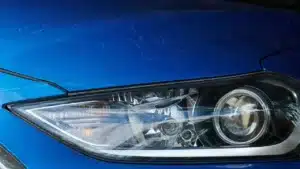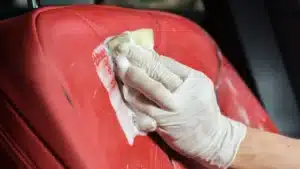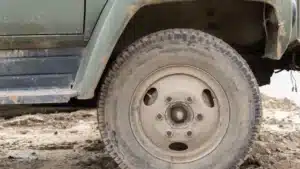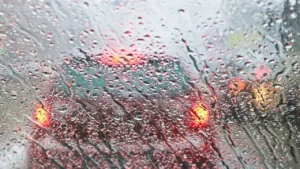You made sure to park your car in the farthest corner of the parking lot in the name of protecting it from getting swiped by another car.
You then proceeded to walk seemingly a mile to the store’s entrance. When you returned an hour later, somehow, someway another driver found a way to sideswipe it and leave behind paint transfer.
This can be an incredibly frustrating scenario for any driver. Fender benders or even minor contact with another car can also leave your vehicle with unsightly scratches and paint transfer.
Fortunately, as long as the damage isn’t too extensive, you can remove paint transfer from your car’s body with a few simple steps, and, in many cases, with items you already have in your home.
This article will discuss various methods for removing paint transfer to restore your vehicle to its original color.
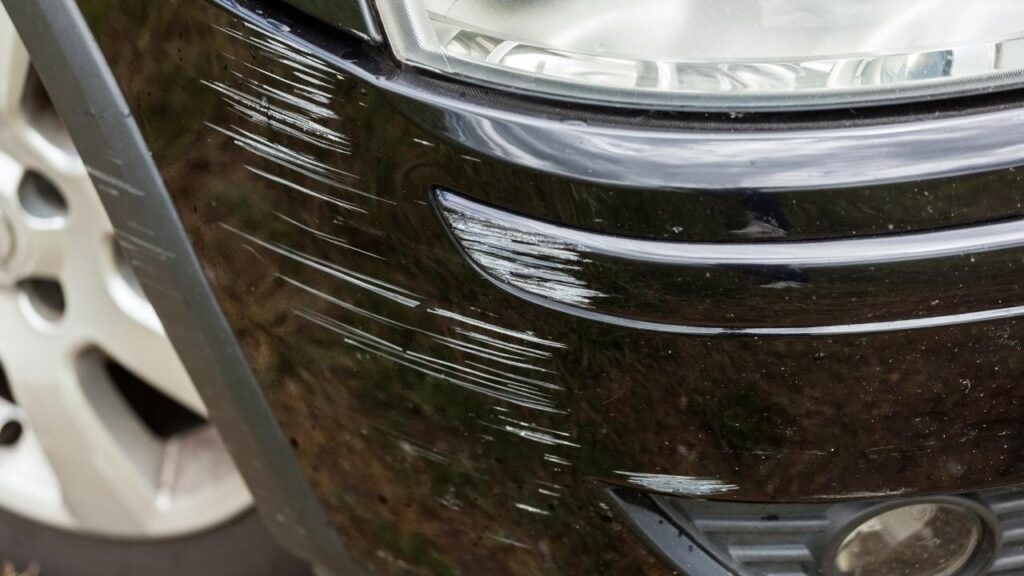
How Does Your Vehicle’s Paint Work?
The method for painting cars has changed dramatically over the years as technology, as well as paints, have evolved. According to Science ABC, automotive paint is derived from a water-based formula that is applied to the body of the car using a spray gun.
It’s composed of polyurethane-based enamel that’s used to protect the paint from environmental damage.
Examine the extent of the damage before removing paint transfer
We’ll explain how to remove scuff marks from car. But before you attempt to remove the paint transfer using one of the methods we’ll discuss below, first determine the extent of the damage to know how to proceed. Read more about how to remove rubber scuff marks from car
Paint transfer
Paint transfer typically occurs when your car comes into contact with another vehicle, and that car transfers its paint to the surface of your car.
The transferred paint lies completely on the top of the surface. In most cases, the paint can be removed easily using DIY methods.
However, if there’s a significant amount of paint, you may want to consult with a professional detailer about your options.
Paint scratch
Car paint scratches are more serious in nature and more difficult to repair as the paint has penetrated the clear coat and caused a scratch.
The easiest way to tell if you have a paint scratch is to rub your finger over the affected area; if you feel an indentation, your car likely has a paint scratch.
Consider contacting a detailing company to learn your options and to see if a professional service is recommended.
How to Remove Paint Transfer from Car
If you determine the paint transfer isn’t severe and you can handle it on your own, consider using one of the following methods:
Method 1: Use Rubbing Alcohol or Scratch Remover
This is an effective method for removing minor paint transfer from the surface of cars.
Materials needed:
- Soap and water
- Rubbing alcohol or scratch remover
- A microfiber towel
Follow these steps for removing the paint transfer:
- First, clean the affected area and the area around it with warm water and soap to remove any dirt or debris.
- Next, apply the rubbing alcohol or scratch remover to the paint transfer and give it a few minutes to soak into the paint.
- Finally, use the microfiber towel and vigorously rub the paint until it is removed.
- You may need to repeat this process.
Method 2: Use WD-40
WD-40 is a great and versatile product to have as it removes grease and grime from almost any surface and protects metal from rust and corrosion. It has also proven effective at removing paint transfer from cars.
Materials needed:
- Soapy water
- WD-40
- Magic Eraser
- Microfiber towel
- Car wax
Here are the steps to take:
- Apply WD-40 to the paint transfer, but try to avoid getting any of it on other areas of the clear coat to avoid potential damage.
- Soak the Magic Eraser in warm water and apply it to the loosened paint transfer. The Magic Eraser will effectively skim over the clear coat but grab on to the paint. Avoid pressing down too hard so you don’t damage the clear coat. One way of telling if you’re pressing too hard is if you notice your car’s paint on the surface of the Magic Eraser.
- Apply a second dose of WD-40 and repeat the process.
- Once all of the paint has been removed, use a microfiber towel dipped in soap and water to remove the WD-40.
- Apply wax to the area, let it sit for a few minutes, and then buff it.
Method 3: Use Nail Polish Remover
Nail polish remover can be effective at removing paint transfer, but be careful not to use too much so you don’t damage the clear coat.
Materials needed:
- Soap and water
- Microfiber towel
- Nail polish remover
First, use warm water and soap to clean the area. Dab a small amount of clear nail polish remover onto the microfiber towel and gently rub the towel against the grain of the paint transfer. Repeat this process until you see results.
For larger areas with paint transfer, occasionally use water to clear away the nail polish remover so it doesn’t linger to avoid damage to the clear coat. If you notice the paint from your car is being removed in the process, stop this method immediately.
Other Methods to Remove Paint Transfer from Car
Some other helpful methods you can consider using include:
Using Gas to remove paint transfer
Gasoline can be used to remove paint transfer from cars, but don’t rub too hard or you could remove the clear coat and cause more damage. Other professionals recommend avoiding the use of gasoline altogether, though, since there’s a higher risk of damaging the clear coat.
If you do choose to use this method, apply some gasoline to the paint transfer and use a clean microfiber towel to gently rub over the affected area. Use water to wash away the paint transfer. Finally, wash and dry the cleaned area thoroughly, and apply some wax to restore the area to a new-like condition.
Using Cooking Oil to remove paint transfer
Cooking or vegetable oil is great in the kitchen, but it can also be effective at removing minor paint transfer from vehicles and involves just a few easy steps.
First, clean the affected area with soap and water, and then completely dry the surface before applying the cooking oil.
Apply the cooking oil over the paint transfer and let it sit for a couple of hours to let it penetrate the paint and break it apart.
Wet a microfiber with warm water and gently begin to remove the paint. Again, don’t rub too hard to avoid removing the clear coat.
Using Toothpaste to remove paint transfer
Toothpaste is another proven technique for removing small amounts of paint transfer from cars because it doesn’t contain any abrasive materials.
Use warm water and soap to clean the area, and then apply a generous amount of toothpaste to a microfiber towel.
Use small, circular motions to apply the toothpaste, and do so gently to avoid causing any damage. Repeat this process until the paint is removed.
Wipe the paint away and clean the area again with soap and water. You can also consider applying wax to restore the shine to the surface.
FAQ
Will Magic Eraser remove paint transfer from car?
A Magic Eraser can be effective at removing paint transfer from cars. Apply some rubbing alcohol or WD-40 to the paint, and gently rub the Magic Eraser over the paint transfer. Avoid damaging the car’s clear coat by rubbing too hard.
Is toothpaste safe on car paint?
Toothpaste won’t damage your car when you use it to remove paint transfer because it doesn’t have abrasive materials. Just be sure to use gentle, circular motions when applying it to your car, and completely remove the toothpaste when you’re finished. Rubbing too vigorously or leaving small amounts of toothpaste behind can cause damage to the clear coat.
Can you use Goo Gone on car paint?
Yes, you can use Goo Gone on car paint. It’s specifically designed to remove gum, glue, wax, grease, and spray paint from several surfaces, including cars.
Will Goo Gone remove paint transfer?
Yes, Goo Gone can be very effective at removing paint transfer from cars. Spray the Goo Gone onto the paint transfer and let it penetrate it for a few minutes. Then use a microfiber towel to wipe the paint transfer away. Make sure to thoroughly clean the area with soap and water before you’re done.
Does clay bar remove paint transfer?
A clay bar won’t typically remove paint transfer, but it’s a great way to clean the area after the paint has been removed from the car’s clear coat.
Related Content:

